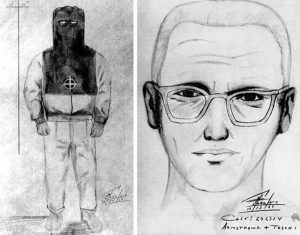Despite it being early morning, a line had already formed. They had gotten off the boat wobbly, still trying to get their land legs back since they had traveled all the way from England. Moving slowly, a mother holding the hand of her young daughter whispered again to her. Moving forward at the command of a union soldier, the young girl looked down, gripping her doll tightly to her chest. Looking up through her eyelashes at her mother as she talked to the man in a blue uniform, she tightened her hand in her mother’s. Another man in blue looked at the young girl smiling, saying to her what a cute doll she had, moving to touch it. The young girl moved behind her mother’s dress remembering her mother’s words whispered to her early in the line. “Don’t let anyone touch your doll.” The man who was talking to her mother yelled at the other for scaring the young girl and apologized to both of them, ushering them forward across the blockade. During the Civil War, the Union blockade hindered the passing of crucial supplies to the Confederate side. Many blockade runners were women and even young girls. Through the use of such people, the Confederates had spark creative ways of smuggling supplies over the blockade. In fact, dolls similar to this girl’s doll was used to smuggle anesthesia drugs through the Confederate lines.
A simple doll made of papier-mâché helped smuggled contraband across enemy lines with the help of a young girl, the niece of Confederate Major General James Patton Anderson. During the start of the Civil War, the South had been winning the war against the North. As the war began, a plan was introduced from the Union. This plan was known as the Anaconda plan. This plan attempted to surround the South and starve their supplies until the South had had enough. The North had a production economy and the South was mainly made up of plantations that produced cotton; the South lacked most of the industrial production that the North produced in abundance. This greatly hurt the South because, as mention before, the North introduced the Anaconda Plan, cutting the South’s access to all kinds of supplies, including anesthetics very much needed by the Confederate medical corps, which became limited and scarce. The need for anesthetics increased for the South.1 The necessity led to creative means, such as this example of using dolls to smuggle these drugs within them to the South.
Dolls named Nina and Lucy Ann are suspected to have been used to smuggle drugs used for anesthetic purposes across the North’s blockade. The South needed these supplies so desperately that dolls were used to carry them across. The Virginia Commonwealth University Heath System Radiology Department has taken X-rays of both dolls and discovered their heads to be hallowed out papier-mâché heads.2 This finding though could not prove that the dolls did, in fact, smuggle contraband across the blockade because many of the dolls during that time period had papier-mâché heads. Further analysis by the United Federation of Doll Clubs (UFDC) concludes that the probability of the dolls being used for smuggling was very high because of evidence such as Nina’s head being secured by clips instead of it being sewed to the body. This evidence suggests that it allowed for things hidden inside that could be easily accessed. More evidence came from Lucy Ann, which had a gash on the back of her head, which was most likely used to get access to items likely contained inside her head. With this conclusion, the museum of the UFDC has stated that it is highly likely that these dolls were used to smuggle some kind of contraband during the Civil War.
The young girl held her doll safely to her chest, whispering reassurance to herself and to the doll. Once the mother had led her daughter to the edge of a clearing of grass near some of the trees across the field, a man in gray was standing there waiting. He ran across the field with such speed that once he had got across, he was out of breath, trying to express his thanks, causing the little girl to giggle at the man’s antics. The mother gently pushed her daughter forward. The young girl looked up at the man; she then kissed the doll’s forehead, and holding her in both hands, she lifted her up, giving the doll to the man. The man took the doll with great care, smiling gently to the young girl. Waving goodbye to her doll and the man, the young girl and her mother watched as he ran as fast as a rabbit across the clearing with the doll’s long curly brown hair swaying in the wind. The North’s blockade had made many of the supplies that the South needed very limited, but that only led to creative ways to circumvent the blockade, such as the use of dolls to smuggle important items across such blockades. The Confederates were desperate for such supplies and the use of dolls was a very good way to smuggle things across. With Nina and Lucy Ann being two such dolls, we now know more about how the South reacted to the blockade during the Civil War.


100 comments
Mateo Ortega-Rios
This article was very interesting and very well written! This was very weird and a topic that we I would not think they have any correlation with each other. This article was very quick but filled with a numerous amount of information that I did not know of. And who would have ever thought that dolls were being used to smuggle drugs into places. This article was very appealing to me and I enjoyed reading this.
Kenneth Cruz
This was a very well written article, Esparanza. I like your use of imagery to describe what the scene was like at the time. You did an excellent job in explaining how this operation was carried out. I like how you described the dolls and how you explained how the drugs were smuggled. I also like how you included that a mother was involved in the smuggling too. What mother in their right mind would put their daughter through that?
Alia Hernandez Daraiseh
This article was written in such a way that captivated my attention, and it provided insight on things that I didn’t even know. That is super creative and smart, on how the South got items that were in children’s dolls. I wonder how the kids felt knowing that they had to give up their dolls. It’s such an interesting story and I wish I learned about this sooner in high school.
Jackie Velasquez
This article was very interesting. I did not know that dolls were used as a way to smuggle drugs in during the time of the Civil War. The author did a great job at keeping the reader entertained by providing us with information on how this was happening and how the heads were attached, along with providing us with a story of how it happened.
Vanessa Preciado
This was a great article. It was very interesting. even more interesting how the child was very willing and knew to stay from the soldier when try to come close to her doll. But the sad thing is what if they were to get caught ? What would happen? Nice work on the article, very informative.
Rodney Jones
What a novel subject. Who knew it had anything to do with the Civil War? The fact that this was a part of the war’s history is both fascinating and startling. I wonder how the kids felt about their dolls and if they had any issues with it and how they felt about the smuggling.
Dylan Vargas
I like the way the article is made up, it tells a story and the same time gives us background knowledge to support the story. Giving us the story of the dolls and the girls really puts us in that time and show what the south had to do to get what they wanted. Even taking a doll from a little girl and smuggling drugs inside it.
Guadalupe Altamira
Very interesting article! I know that the north had plans to dry out the south of supplies but I wasn’t aware of how the south got around that. They lacked many things like supplies for soldiers and those who were injured. They were desperate at that point that they needed to empty out a toy doll from a little girl and fill it with things they needed to get them to the south. It is very interesting how smuggling has come a long way and it started with a little girl’s toys and an idea. Amazing article!
Laura Poole
What a unique topic. Who knew this was a factor in the Civil War? I wish I was taught about this because it is so interesting and shocking that this was a piece of history for the war. I wonder how the children felt about the smuggling and if some had problems in giving up their dolls. I can tell this was a planned out article good work.
Helena Griffith
This article describes how small children have been exploited to smuggle drugs across borders by having the children hold drug-filled dolls and toys. How they persuaded the students to do this is what I find fascinating. I believe that no one should expose children to either war or drugs, but combining the two is even worse.
Given that we will soon learn about the American Civil War and the divide of the North and South, this is relevant to what we are studying. This historical period also considers the fact that the south does not have the same resources as the north, and vice versa.
The essay appeals to me because it is filled with details and is organized well. I enjoy how the articles are not too long and are broken up into four paragraphs about the same side, but I do wish there were more photographs. Since I can envision a scene in my brain when I see a picture, it is a little harder for me to understand what I am reading when there isn’t an image to go along with it.